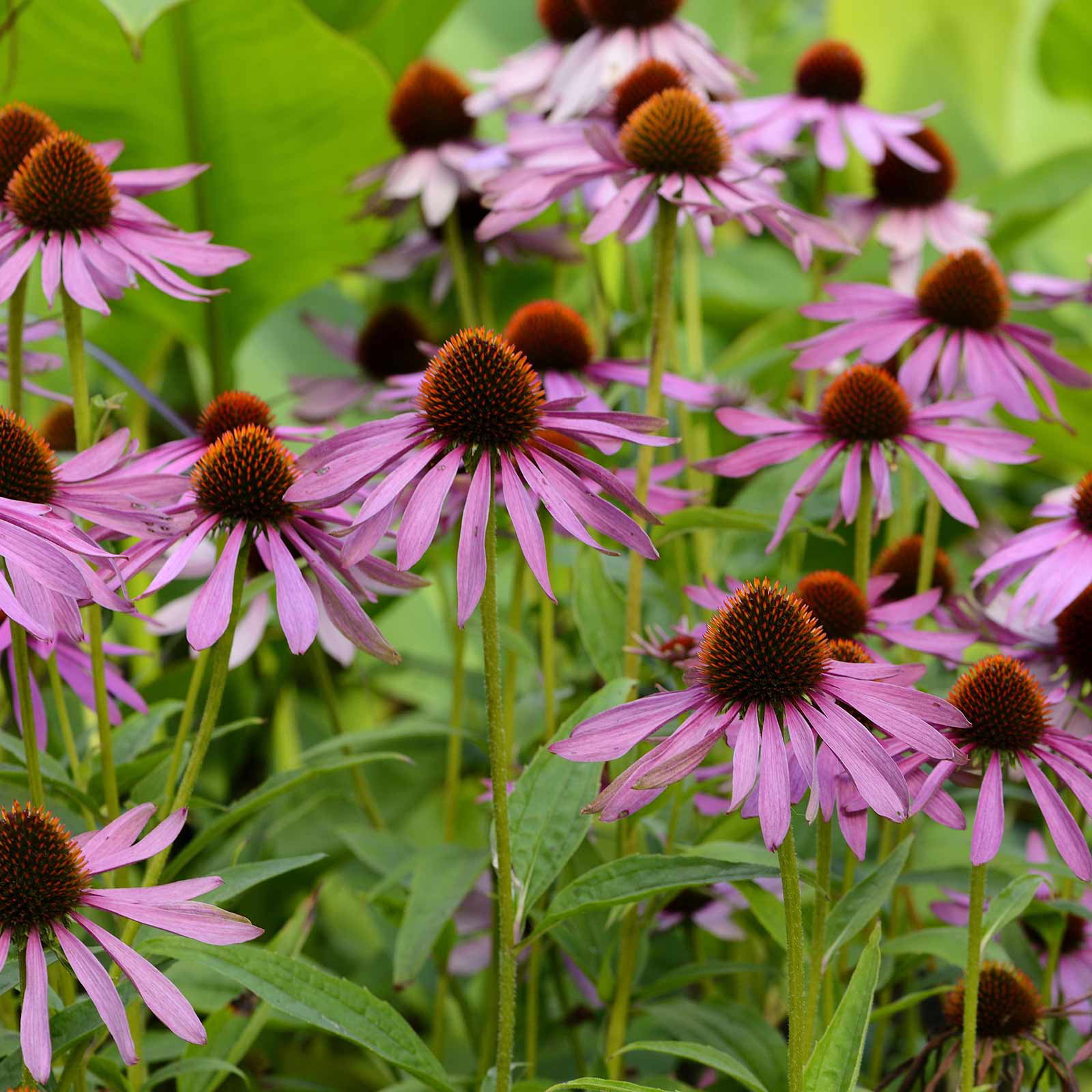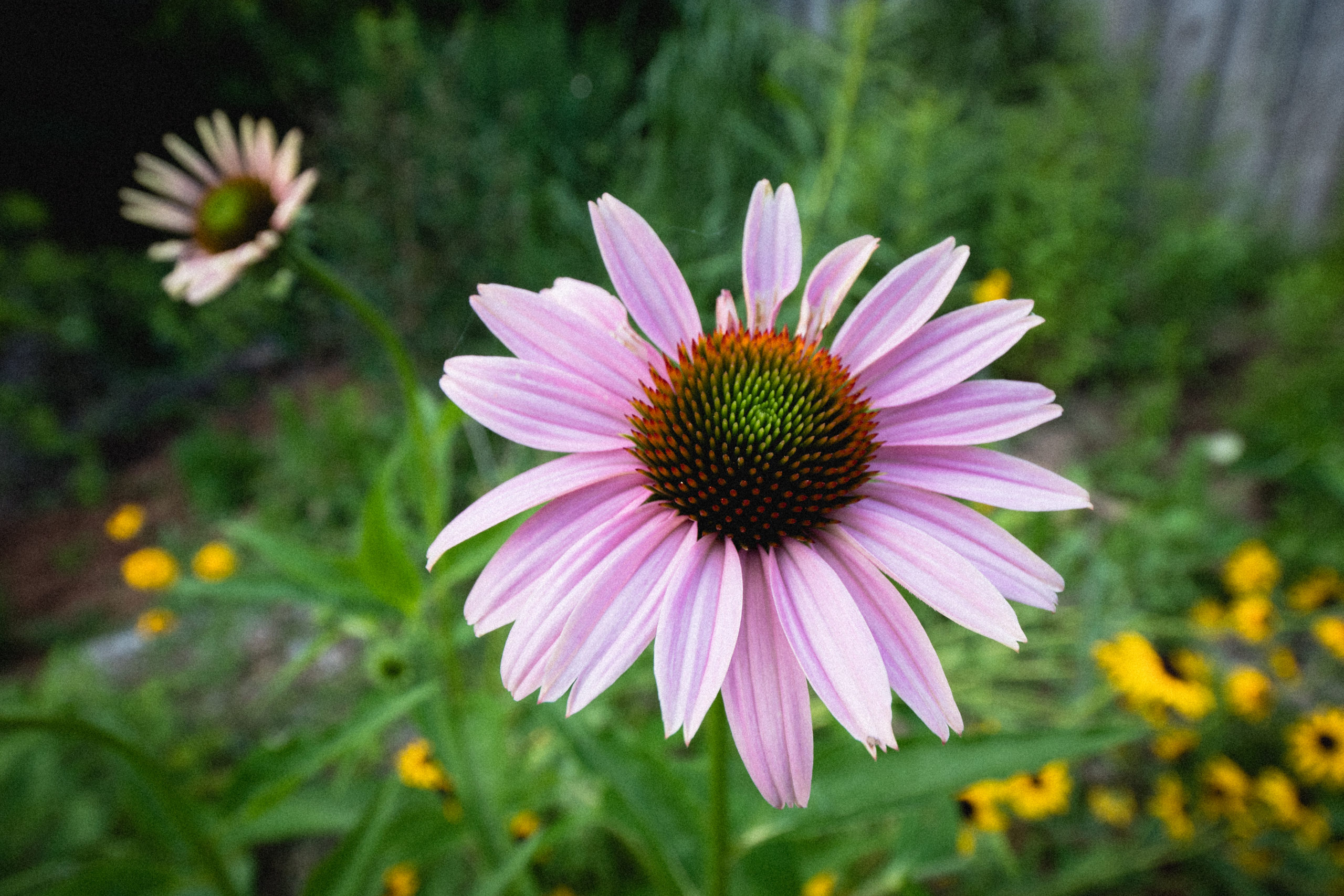

Purple coneflower forms gray-white, up to 5 mm (0.2 in) long schizocarp fruits, so-called achenes. The flowers magically attract butterflies and bees. In the meantime, there are also varieties with white, yellow and orange-red flowers. Blossomsįrom July to September, up to 12 centimeters wide, marguerite-like flower heads with purple-pink florets and a highly arched, brown-red center, the so-called basket, appear. The basal leaves are ovate, toothed, rough-hairy, dark green and up to 15 centimeters (6 in) long. In winter the above-ground parts of the plant freeze to death, but in spring Echinacea purpurea reliably sprouts again. The perennial grows between 80 and 100 centimeters (32 and 40 in) high. From a powerful taproot with numerous vertically growing secondary roots, upright and bristle-hairy stems sprout. The purple coneflower forms upright clumps. Characteristics of purple coneflower Plant Meanwhile there are numerous colorful cultivars of Echinacea purpurea. The botanical name Echinacea is derived from the Greek word “echinos”, which also means “hedgehog”. The name “hedgehog coneflower” refers to the spiny texture of the flower heads. The perennial owes its name to the shape of the flower base, which resembles a pointed hat. If one compares the two perennials more closely, however, clear differences can be found. However, the degree of relationship between the two perennials is still hotly debated among botanists.

With the yellow flowering coneflower (Rudbeckia) the purple coneflowesr are – since some years – officially no longer closely related, although the plants resemble each other very much at first sight. Meanwhile, Rudbeckia and Echinacea are assigned to two different botanical genera. Only in 1794 the genus received its until today valid name Echinacea by Conrad Moench (1744-1805). Carl von Linné gave the species the name Rudbeckia purpurea in 1753, with which it was assigned to the genus Rudbeckia. In 1696 the perennial was described for the first time in England by the botanist Leonard Plukenet (1642-1706) as “Chrysanthenum americanum”, because he discovered similarities with the garden chrysanthemum. Already with the American Natives, the wild herb was considered an antiseptic medicinal plant and is used today in many cold remedies. The purple coneflower (Echinacea purpurea), also known as eastern purple coneflower or hedgehog coneflower, is a very popular garden perennial from the daisy family (Asteraceae), which originally comes from the prairies of North America. W inter hardiness: hardy, USDA Plant Hardiness Zones: 4 (-32 ☌ / -25 ☏)īee and insect friendly: Yes Plant characteristics and classification of purple coneflower Plant order, origin and occurrence of purple coneflower Use in : flower beds, flower bouquets, single position, group planting, planters, borders, apothecary garden, cottage garden, flower garden, prairie garden, potted garden These information are for temperate climate! Soil quality: gravelly to loamy, lime-tolerant, nutrient rich, humus rich Other names: eastern purple coneflower, hedgehog coneflower This is how you plant and care for the perennial properly. Purple coneflower is a pretty perennial for sunny beds and an insect magnet at the same time. Purple coneflower – cultivation and care.Plant order, origin and occurrence of purple coneflower.Plant characteristics and classification of purple coneflower.

Freely self-seeds if at least some of the seed heads are left in place. Plants usually re-bloom without deadheading, however prompt removal of spent flowers improves general appearance. An adaptable plant that is tolerant of drought, heat, humidity and poor soil.
#PURPLE CONEFLOWER INFO FULL#
The dead flower stems will remain erect well into the winter, and if flower heads are not removed, the blackened cones may be visited by goldfinches or other birds that feed on the seeds.Įasily grown in average, dry to medium, well-drained soil in full sun to part shade. It will bloom throughout summer atop stiff stems clad with coarse, ovate to broad-lanceolate, dark green leaves. Blooms appear June-September and some Purple Coneflowers may re-bloom in the fall. They are much-loved by bees and is a host plant for the Ottoe Skipper. The flowers are a golden red to purple and may release a slight fragrance in strong sunlight. Purple Coneflower, is a coarse, rough-hairy, herbaceous perennial that is native to moist prairies, meadows and open woods. It is a drought-tolerant perennial that is also deer resistant. A prairie classic! Purple Coneflower (Echinacea purpurea) has a fibrous root system with short woody rhizomes.


 0 kommentar(er)
0 kommentar(er)
